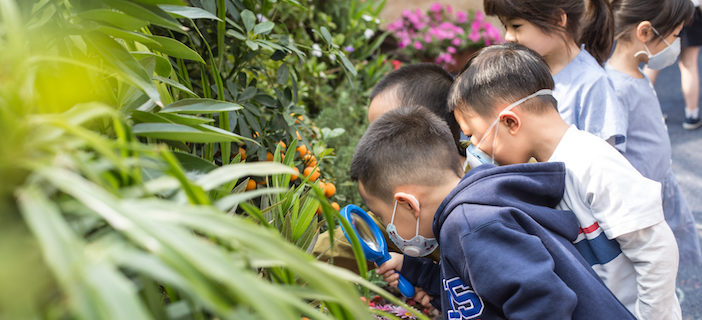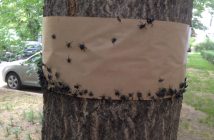In modern childhood, carefree, unstructured outdoor playtime is being replaced more and more by academics, competitive extra-curricular activities, and electronic entertainment. While many parents worry that their children will be at a disadvantage if they are not constantly engaged in structured learning and latest educational activities, Mrs. Maryanne Harper, Coordinator of Early Childhood Education (ECE) at Yew Chung International School of Beijing (YCIS Beijing) ensures us that spending some quality time in the great outdoors also goes a long way in preparing young children for all-around success.
As the trees are turning green and the parks are coming back to life, Mrs. Harper tell us that the ECE students and teachers at YCIS Beijing are enthusiastically welcoming the Spring season by integrating outdoor activities into the curriculum, supported by Development Matters, a guide from the United Kingdom for learning based on developmentally appropriate practice.
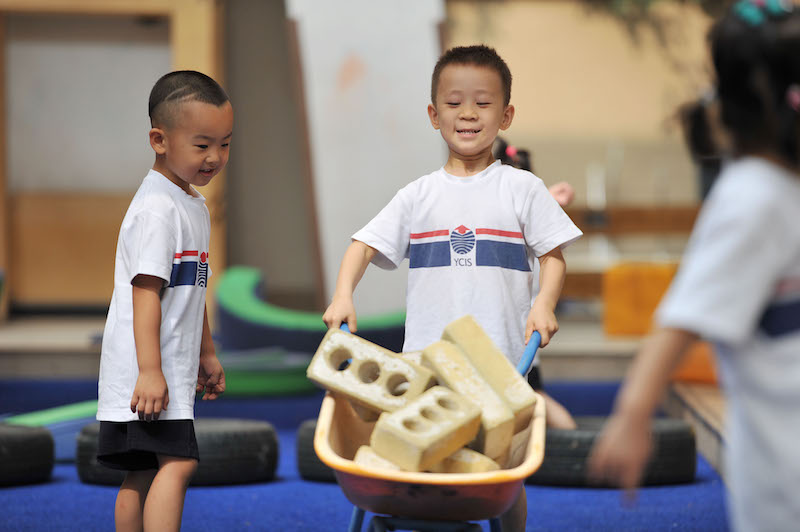
“Our opportunities to roam free and connect with nature are not what they used to be,” she says fondly, recalling her own childhood spent in her large backyard in Australia. “However, the outdoor environment, when utilized wisely, not only helps boost physical and mental health, it also offers an abundance of learning and developmental potential for children.” YCIS Beijing makes use of the public park that lies only a few feet away from the large, free-flowing multi-age indoor class space, known as the ECE Learning Community. “In addition to the school’s own well-equipped playgrounds, Honglingjin Park becomes an outdoor extension of the class space and offers educational opportunities with numerous benefits,” she explains.
When the two to five-year-olds rush outside to observe the activities of tiny critters, to contemplate the change of seasons, to negotiate their turn on the beam balance, and to discover the world around them, they become active participants in their own education. While exploring, questioning, and developing theories about how things work, the children experience various types of interaction with nature, with their peers, and with their teachers. A growing body of research also confirms that self-directed outdoor play in a natural environment provides rich fodder for young imaginations, growing vocabularies, budding social skills, and expanding attention spans.
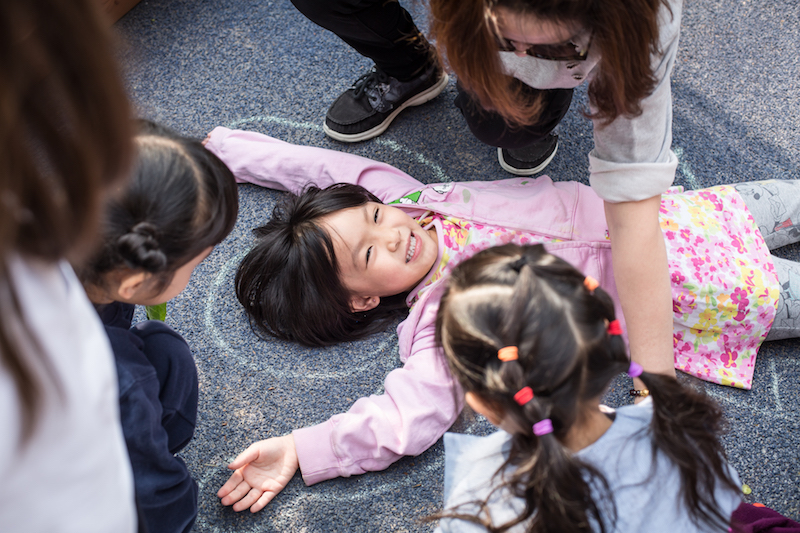
Parallel to intellectual and social development, outdoor learning also offers the chance for children to exercise. By staying active, children tend to develop their motor skills, such as coordination, balance, and agility. They learn to assess risk while running around on natural, irregular terrain and become more confident in their physical abilities.
“Another excellent aspect of outdoor learning in Honglingjin Park is that students gain a wonderful perspective of Chinese culture,” Mrs. Harper adds. Observing park-goers practicing tai-chi, playing traditional musical instruments, and entertaining themselves with unique Chinese games every morning provides a window into Chinese culture and helps children engage with the story of the place that they live in. “It aligns nicely with the school’s aim to deliver a program that blends the best of east and west.”
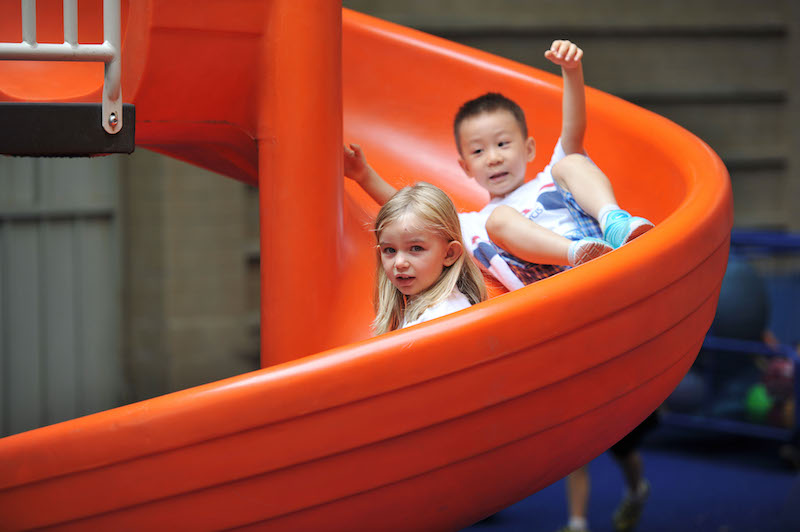
When asked if such self-directed outdoor activities also prepare students for indoor learning, Mrs. Harper emphasizes that “outdoor and indoor learning heavily influence each other and shouldn’t be considered as separate elements of the curriculum.” In simply playing with rocks, for example, a child could discover properties of counting, understand concepts of weight, size, shape – all of which that are the underpinnings of math.
This sounds idyllic and yet may trigger parental fretting: “What about the pollution in Beijing?” they may ask. Mrs. Harper assures us that the AQI is monitored in real-time with sophisticated equipment and the school’s medical room sends regular messages to all staff advising them of the AQI level and the necessary precautions that must be taken. “In our ECE Learning Communities, we have a strict AQI limit to determine if students can go outside or need to remain indoors,” she says.
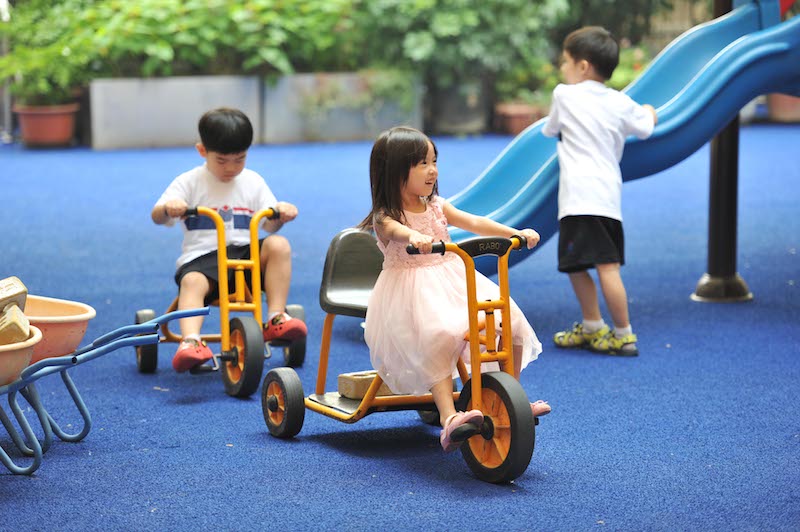
“Will ‘School in the Park’ help prepare children for modern primary schools and the technologically-obsessed modern world?” This is another question that parents may have. By integrating the two seemingly opposed areas of nature and technology, the teachers create opportunities for young children to become technologically literate as well as reap the myriad benefits that the outdoors has to offer. “Last week, our students took their iPads into the park and were asked to take photos of the patterns they discovered,” Miss Tilly Asafu-Adjaye, one of the ECE teachers explains. “We provide various items to encourage exploration and build upon curiosity,” she continues, pointing to a group of little scientists observing a few celery leaves under a microscope.
The importance of natural elements and outdoor learning is thus highlighted as creative and necessary to enhance a child’s whole development – one of the key missions of YCIS Beijing. Besides utilizing outdoor learning to shape their individual cultural and social identities, teachers are also helping foster an ecological identity. The encouragement to actively participate in nature rather than simply see it as scenery opens children up to a broader connection with the earth. Perhaps it is the constant emphasis on this connection throughout the growing years that will lead the future generation to value healthy communities and sustainable futures.
This post is sponsored by YCIS Beijing
Photos: Uni You, courtesy of YCIS Beijing

